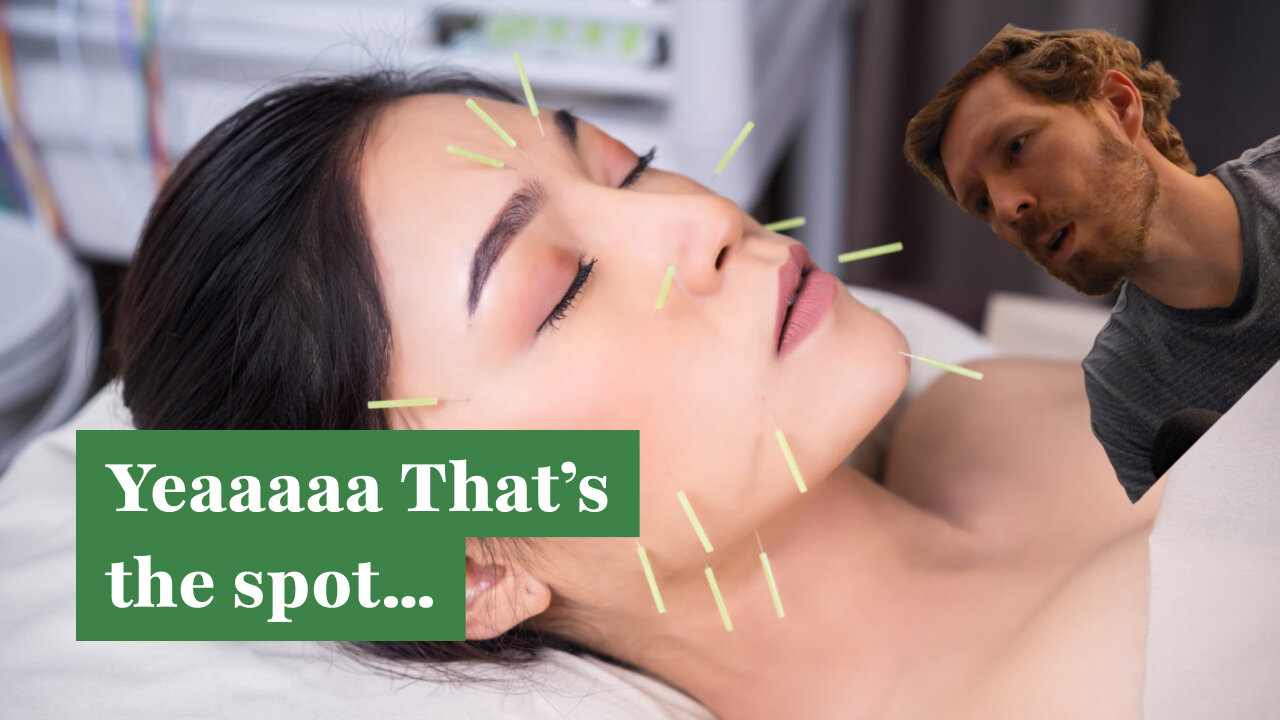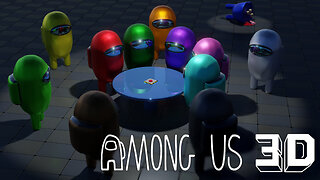Premium Only Content

Acupuncture - Deep Dives with Bob
Acupuncture aims to balance the body’s chi through needles, promoting healing. Its effectiveness for pain and certain conditions is supported, but the science is unclear.
Okay, so let’s get into it—needles. People stick them into other people, and somehow, that’s supposed to help. But… how? That’s what I wanted to know when I started digging into acupuncture. We’ve all heard about it, but there’s still a ton of mystery surrounding it. Let’s break it down.
### What Is Acupuncture?
Acupuncture is a core practice in Traditional Chinese Medicine (TCM). TCM believes that the body has an energy flow, known as “qi” (or “chi”), which flows through channels in the body. When this flow is balanced, you feel good. When it's unbalanced, things go south. It’s kind of like a cosmic energy highway inside you. The energy has a positive and negative side, yin and yang, and if these energies get blocked, your body’s not functioning properly. Acupuncture is all about unblocking this flow by sticking needles into specific points on the body. Yes, needles.
There are over 2,000 acupuncture points scattered across the body. These points are connected to meridians—energy channels that correspond to organs. The idea is that, by inserting thin needles into these points, you stimulate the body’s natural healing processes. Acupuncturists may also use heat (moxibustion), pressure (acupressure), suction (cupping), or electrical stimulation to boost the effects. The needles themselves are incredibly thin, and most people say you don’t really feel them, just a slight ache or pressure when they’re inserted.
### How Does It Work?
Here’s where it gets a little tricky. TCM tells us that acupuncture helps restore balance to the body’s qi. But modern science hasn’t fully figured out how it works in terms of Western medicine. One widely-accepted theory is that acupuncture stimulates the central nervous system, which releases chemicals that promote healing. So while acupuncture has been shown to help with things like headaches, nausea, and even asthma, the exact mechanisms aren’t totally clear. Some studies suggest acupuncture triggers an anti-inflammatory response in the body, which helps with conditions like pain or systemic inflammation. One study even found that electroacupuncture (when electrical currents are applied to the needles) helped reduce cytokine storms in mice, a dangerous immune response tied to severe inflammation.
Acupuncture has even shown some promise in treating addiction, which is a little mind-blowing. But the kicker? Despite all this, scientific studies still don’t have a concrete explanation for how acupuncture works. That’s a huge area of debate in the research community.
### The Needle Insertion: How Deep Do They Go?
Let’s talk about the actual needles for a second. How deep do they go? The truth is, it varies. For areas like the face or neck, acupuncturists insert the needles only a little bit into the skin—around a quarter-inch. For larger areas like the back or thighs, needles may go deeper, up to 2 inches. But no matter how deep, the goal isn’t to cause pain, but to stimulate the right points to balance the body’s energy.
While acupuncture needles don’t go super deep, they can still penetrate the skin, muscles, and sometimes even deeper tissues. It’s not like your regular needle at the doctor’s office. Acupuncture needles are super thin, and most people barely feel them going in, though you might notice a slight dull ache or tingling when they’re at the right depth.
### How Do Acupuncturists Find the Right Points?
Finding the correct acupuncture points isn’t a guessing game. Acupuncturists use a method called “meridian theory” to locate the points. Basically, there are 12 major meridians that correspond to different organs. The acupuncturist’s goal is to identify the “sick” meridian (the one causing issues) and then find the acupoints that will help restore balance. But as with many things in acupuncture, there’s some debate about how accurate this process is. Some studies suggest that different acupuncturists can be a bit hit-or-miss when it comes to finding these points.
-
 5:59:47
5:59:47
SpartakusLIVE
9 hours agoThe HUGEST Brain (not forehead) delivers Saturday SPARTOONS || Variety Later - Shadow of Mordor
181K4 -
 2:34:20
2:34:20
Barry Cunningham
10 hours agoPRESIDENT TRUMP WELCOMES FOOTBALL SEASON! AND MORE BREAKING NEWS!
72.6K48 -
 54:47
54:47
Side Scrollers Podcast
13 hours agoSide Scroller Presents KING OF THE KART | MASSIVE MARIO KART TOURNAMENT
41.7K -
 4:12:33
4:12:33
Mally_Mouse
13 hours ago🔥🍺Spicy HYDRATE Saturday!🍺🔥-- Let's Play: Baldur's Gate!
34.2K3 -
 2:26:32
2:26:32
BooniesHQ
9 hours agoGame Of SKATE Shaun Hover Vs. Jeff DeChesare: Boonies Skate Night 1
108K6 -
 3:56:19
3:56:19
MissesMaam
4 hours agoAmong Us 3D (ft. Rumblers) 💚✨
11K1 -
 LIVE
LIVE
S0lidJ
5 hours ago🟢Live - S0lidj - Solo Snipes
61 watching -
 17:08
17:08
Exploring With Nug
1 day ago $2.74 earnedMassive Thunderstorm Hits During Search for Missing Georgia Woman!
27.5K1 -
![RCP #29🤟 [FR/ENG] 🤟 Satisfactory trying to grow a beautiful Factory, possible other Game later 🤟](https://1a-1791.com/video/fww1/98/s8/1/o/q/N/d/oqNdz.0kob-small-RCP-29-FRENG-Satisfactory-t.jpg) 8:05:52
8:05:52
Deaf Gamer Girl
10 hours agoRCP #29🤟 [FR/ENG] 🤟 Satisfactory trying to grow a beautiful Factory, possible other Game later 🤟
3.97K -
 LIVE
LIVE
Cewpins
4 hours agoSmoke Sesh!🔥Let's Get LIT!!!🍃420💨!MJ !giveaway
43 watching